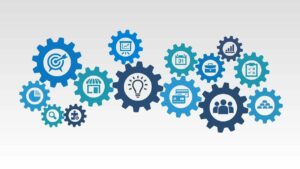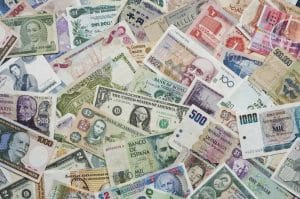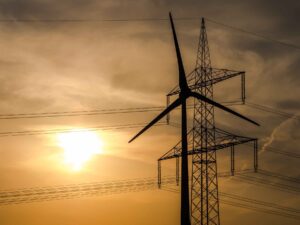Macroeconomics: Meaning, key concepts, and more

Meaning of macroeconomics
Macroeconomics as a branch of economics, encompasses the study of economic phenomena that operate at the aggregate level, providing a holistic perspective on the functioning of economies. It involves analyzing the behavior and performance of an economy as a whole, rather than focusing on individual economic units. Macroeconomists examine the interactions between various economic variables, such as gross domestic product (GDP), employment, inflation, consumption, investment, and international trade, to understand the overall health and stability of an economy. The scope of macroeconomics extends to both short-term fluctuations, known as business cycles, and long-term economic growth, providing insights into the dynamics of economies over time.
Key concepts in macroeconomics
- National income: One of the fundamental concepts in macroeconomics is national income, which refers to the total value of goods and services produced within an economy during a given period. Macroeconomists use various measures of national income, such as Gross Domestic Product (GDP), Gross National Product (GNP), and Net National Income (NNI), to assess the economic performance and standard of living of a country’s population.
- Employment: Another crucial concept in macroeconomics is employment, which refers to the utilization of labor in the production of goods and services. Macroeconomists study employment levels, unemployment rates, and labor market dynamics to assess the health of an economy and its impact on households, businesses, and government policies. Employment is a critical determinant of economic growth, income distribution, and overall societal well-being.
- Inflation: Inflation, or the sustained increase in the general price level of goods and services over time, is another significant concept in macroeconomics. Macroeconomists analyze inflationary trends, causes, and consequences to understand its impact on consumers, producers, and the overall economy. Inflation affects purchasing power, interest rates, investment decisions, and monetary policy, making it a critical factor in economic analysis and policy making.
Analytical tools and models in macroeconomics
Macroeconomists utilize a range of analytical tools and models to better understand the complex dynamics of economies. These tools help in analyzing and predicting the behavior of economic variables and their interactions. Some commonly used tools and models in macroeconomics include:
- Aggregate Demand and Aggregate Supply (AD-AS) Model: This model illustrates the relationship between the total demand (aggregate demand) and total supply (aggregate supply) in an economy, helping to analyze the factors that determine changes in output, employment, and price levels.
- Keynesian Cross Model: This model, developed by John Maynard Keynes, analyzes the determinants of national income and helps in understanding the role of consumption, investment, and government spending in influencing economic output and employment.
- Phillips Curve: This model shows the trade-off between unemployment and inflation, helping policymakers analyze the potential relationship between these two variables and formulate appropriate policy responses.
- IS-LM Model: This model explains the relationship between real output (IS) and the money market (LM) and helps in analyzing the interaction between fiscal policy and monetary policy in an economy.
- Dynamic Stochastic General Equilibrium (DSGE) Models: These complex models incorporate multiple variables, uncertainties, and shocks to simulate the behavior of an entire economy over time and assess the impact of different policy interventions.
Macroeconomics and economic indicators
Economic indicators are quantitative measures that provide insights into the health and performance of an economy. Macroeconomists rely on a variety of economic indicators to assess the current state of the economy, monitor its progress, and make informed policy decisions. Some commonly used economic indicators in macroeconomics include:
1. Gross domestic product (GDP)
GDP is one of the most widely used indicators in macroeconomics, representing the total value of all goods and services produced within an economy during a specific period.
It provides a comprehensive measure of economic output and is used to assess the size, growth rate, and structure of an economy.
2. Employment and unemployment rates
These indicators measure the level of employment and joblessness in an economy, providing insights into labor market conditions and trends.
Macroeconomists analyze employment and unemployment rates to assess the health of an economy, the level of labor market slack, and the potential impact on consumer spending and overall economic performance.
3. Consumer price index (CPI) and producer price index (PPI)
These indicators measure changes in the prices of goods and services at the consumer and producer levels, respectively.
They help in tracking inflationary trends and analyzing the purchasing power of consumers and producers, which are critical factors in macroeconomic analysis and policy making.
4. Interest rates
Interest rates, such as the federal funds rate or the central bank’s policy rate, are important indicators in macroeconomics.
They influence borrowing costs, investment decisions, and the behavior of consumers and businesses, making them crucial in understanding monetary policy and its impact on the economy.
Macroeconomics and economic policy challenges
Macroeconomists face various challenges in analyzing and addressing complex economic issues. Some of the key challenges include:
1. Uncertainty and complexity
Economies are complex systems with multiple interrelated variables, and their behavior is influenced by a range of factors, including technological changes, geopolitical events, and societal trends.
Macroeconomists grapple with uncertainties and complexities in analyzing and predicting economic outcomes, which can impact the accuracy of their analysis and policy recommendations.
2. Data limitations
Macroeconomic analysis relies heavily on data, and the availability, accuracy, and quality of data can pose challenges.
Macroeconomists need to carefully interpret and analyze data, account for data limitations and gaps, and make informed assumptions to generate reliable insights and forecasts.
3. Diverse economic contexts
Economic conditions vary across countries, regions, and time periods, and macroeconomists need to account for these diversities in their analysis and policy recommendations.
Different economic systems, institutional settings, and cultural factors can impact the effectiveness of macroeconomic policies, requiring tailored approaches for different contexts.
4. Trade-offs and policy dilemmas
Economic policy decisions often involve trade-offs and dilemmas. For example, policies that aim to stimulate short-term economic growth may have long-term implications, such as inflation or unsustainable debt levels.
Macroeconomists need to carefully consider and balance these trade-offs in their policy recommendations, taking into account the potential benefits and costs of different policy options.
Conclusion
Macroeconomics forms the backbone of modern economics, providing invaluable insights into the functioning of economies and guiding policy decisions. Its comprehensive approach, which takes into account the interactions among various economic factors, makes it a powerful tool for analyzing and understanding the performance of economies as a whole.
From managing inflation to addressing unemployment, macroeconomics offers policymakers and businesses critical insights to navigate the complexities of the economic landscape.
Don't miss a thing. Follow us on Telegram and Follow us on WhatsApp. If you love videos then also Subscribe to our YouTube Channel. We are on Twitter as MakeMoneyDotNG.





